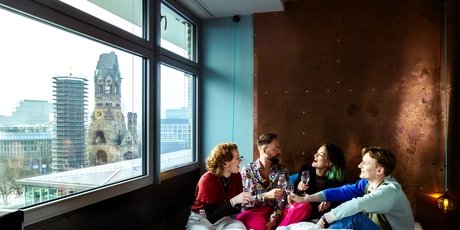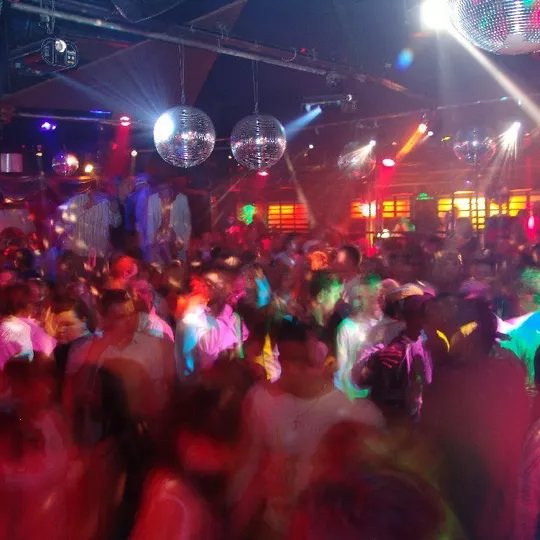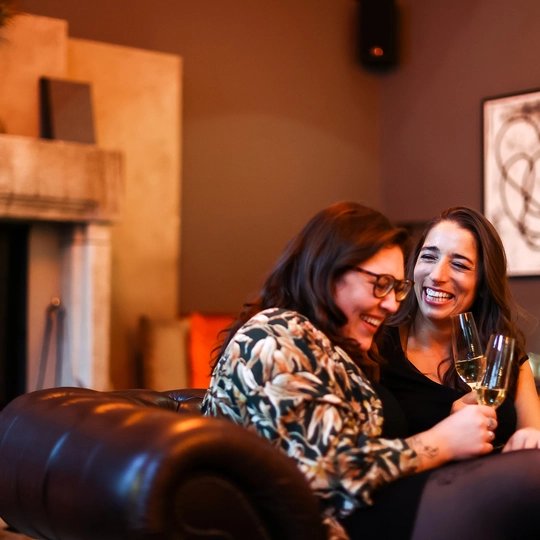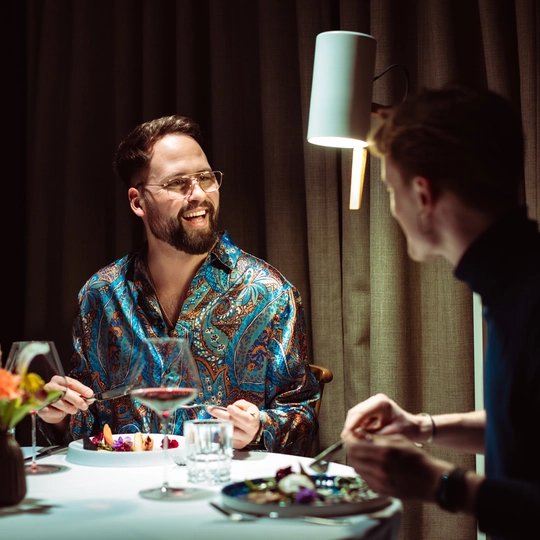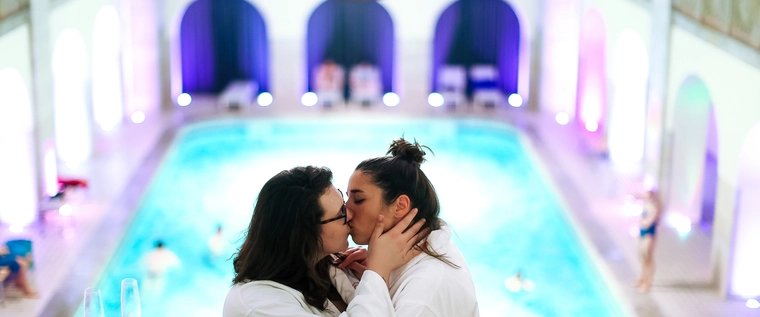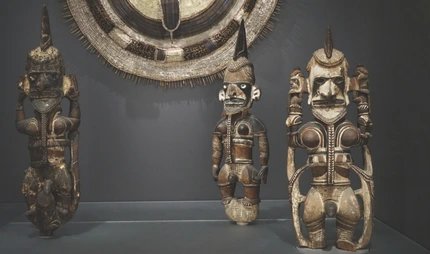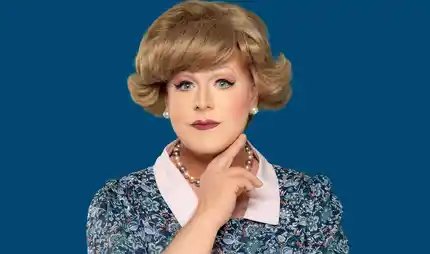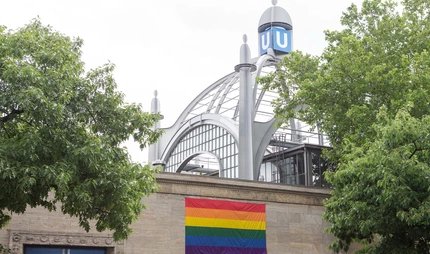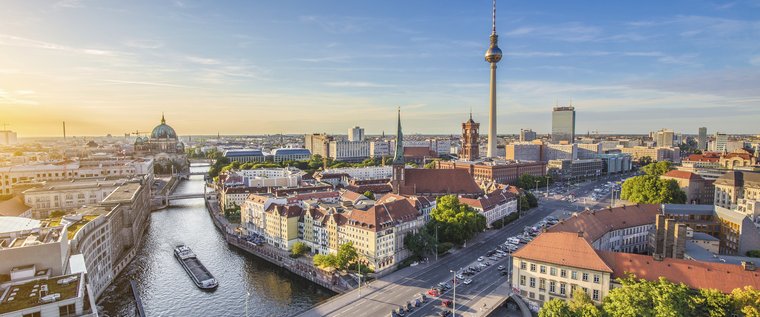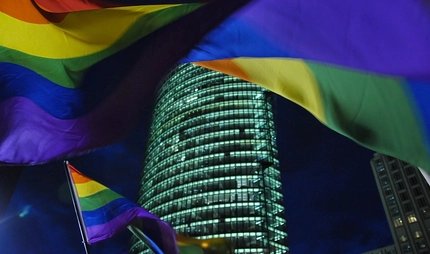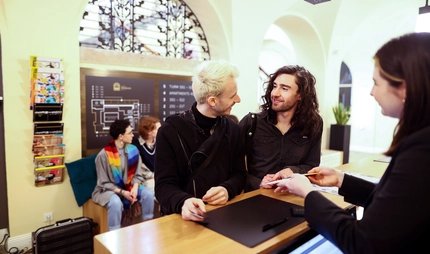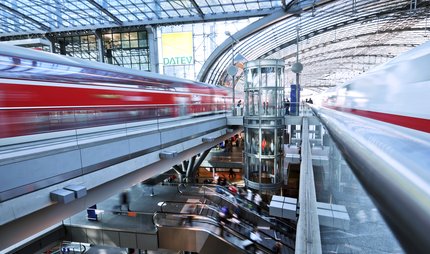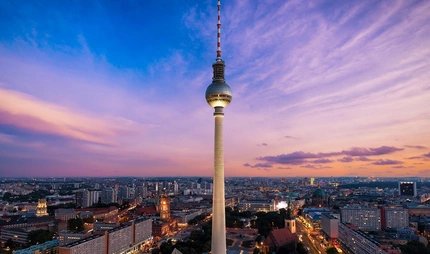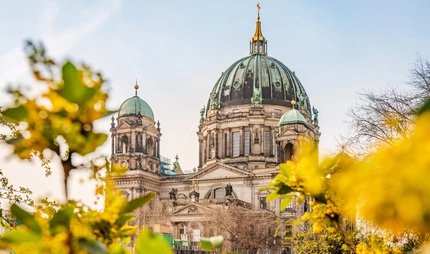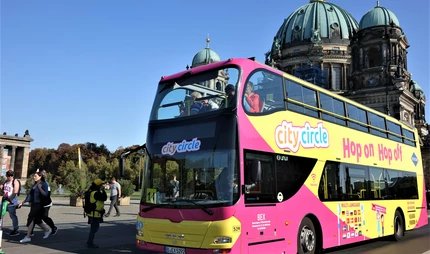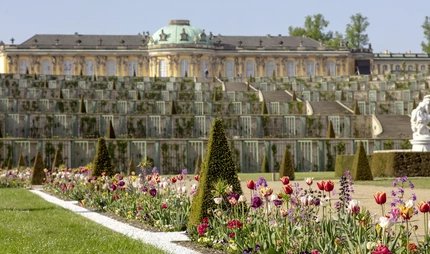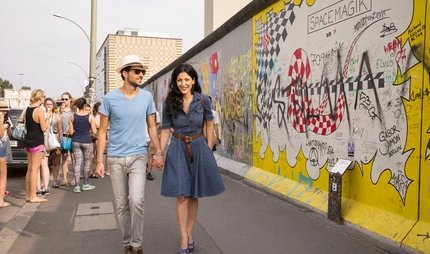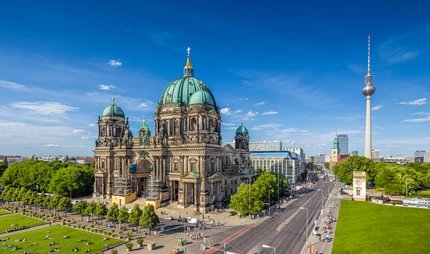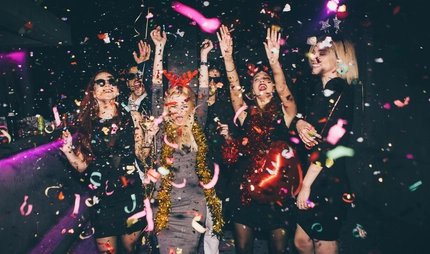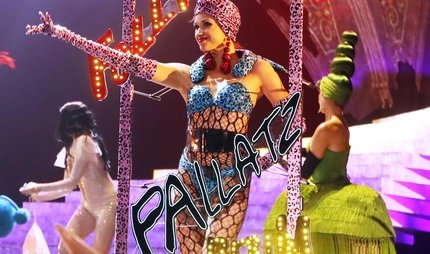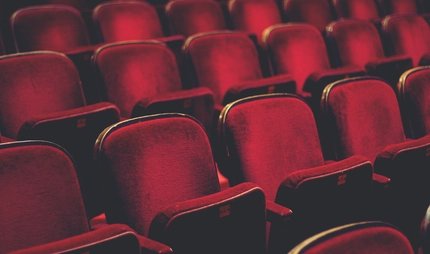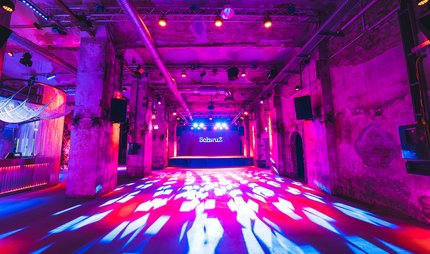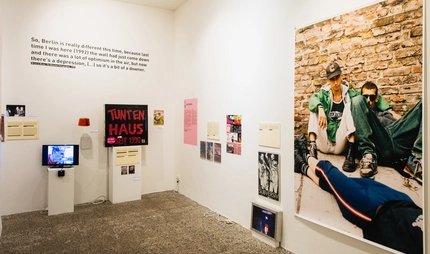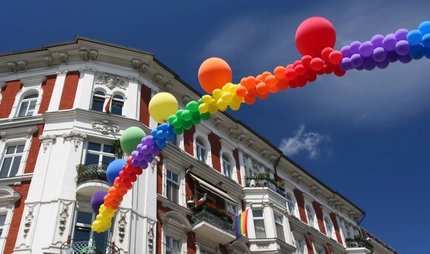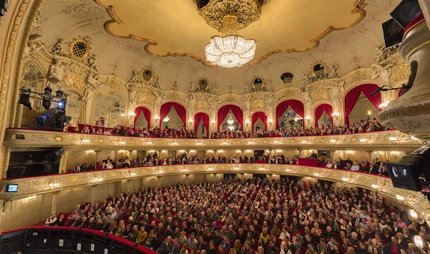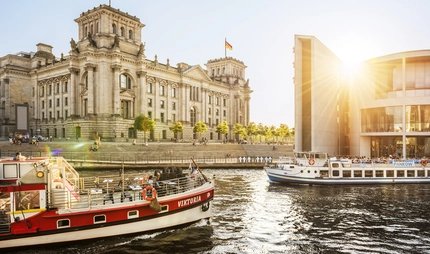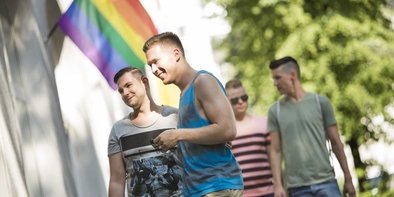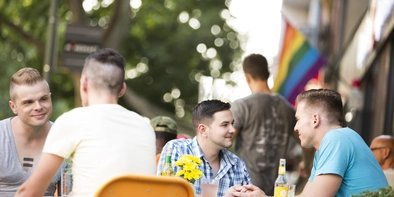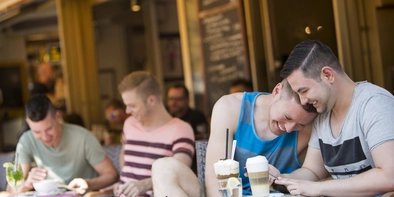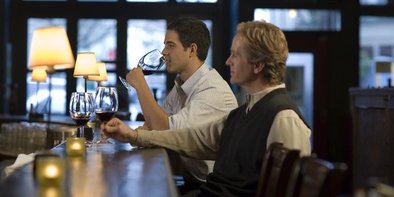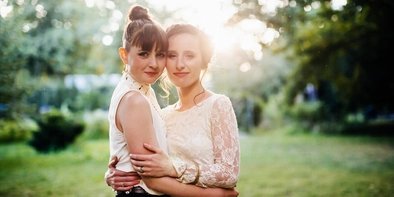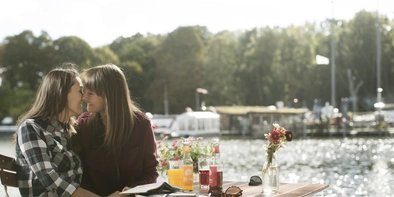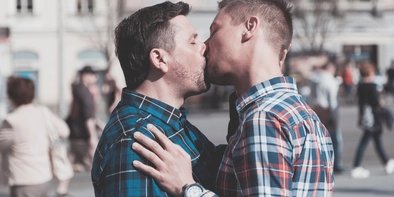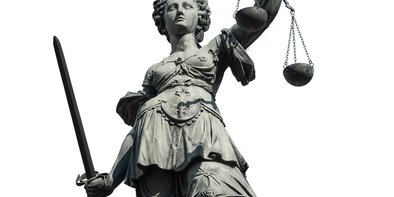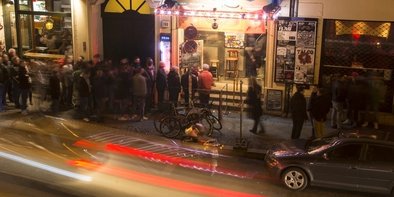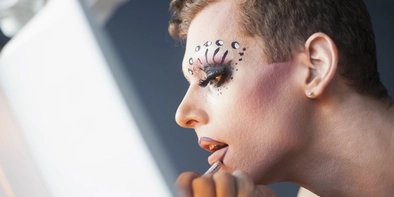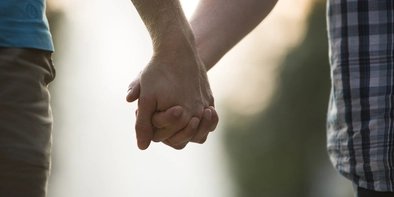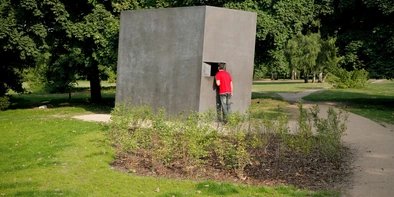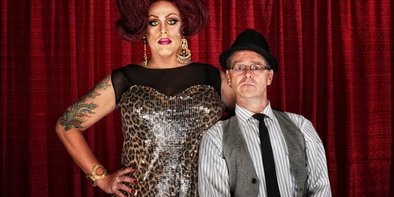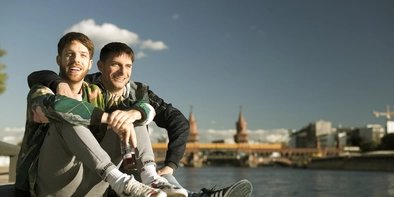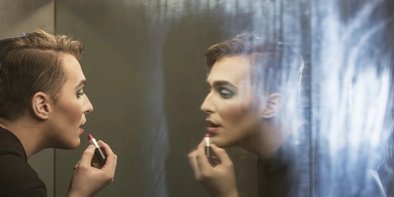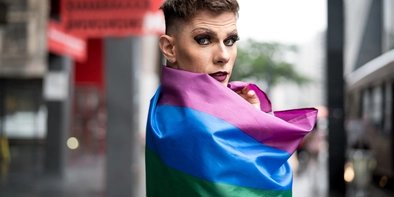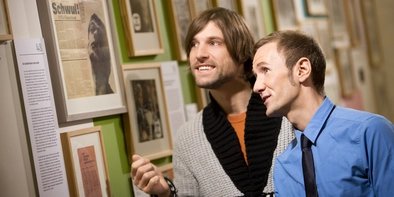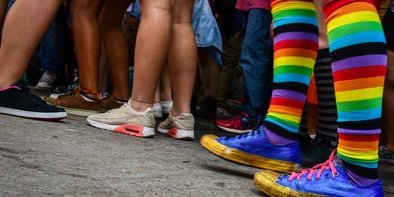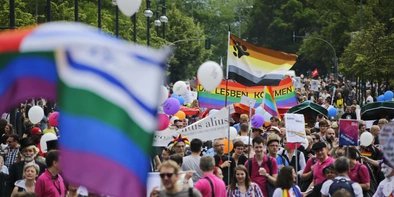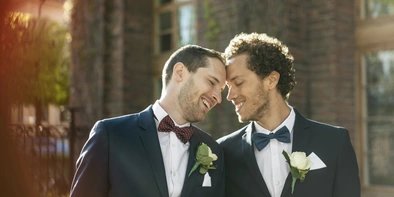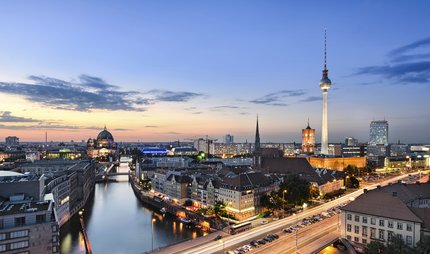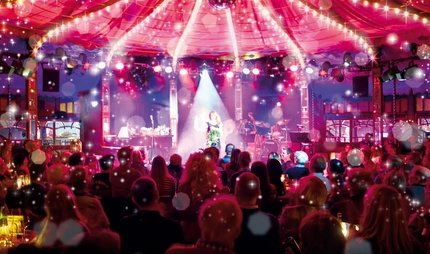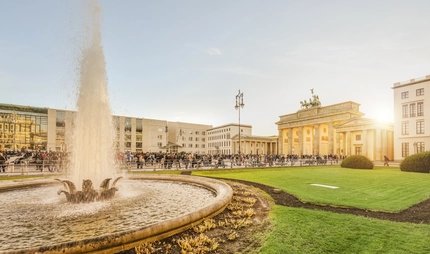
Tips for queer Berlin
Be yourself. Love who you want – diversity and freedom are not just words in Berlin. Discover present-day Berlin as one of the most open and tolerant cities in the world – the gay, lesbian and queer scene is flourishing in the German capital.
The highlight of Berlin's LGBTQ+ calendar is Pride Month and CSD Berlin. Up to 750,000 people then parade across the city. When it's not CSD, there's still plenty of queer fun to be had. Starting with the first gay fetish parties at Berghain, many Berlin clubs and bars now celebrate queer, loud & proud, such as SchwuZ, Berlin's largest LGBTQ+ club. Immerse yourself in Berlin's queer scene!
Description
The video gives an insight into the offers of the Pink Pillow Berlin Collection. These are LGBTQ+-friendly hotels in Berlin. In the video, various queer people have their say (in English) about why they feel comfortable in Berlin. They are shown in different hotel scenarios and some typical Berlin sights such as the East Side Gallery, the Brandenburg Gate, the TV Tower and the Oberbaum Bridge can also be seen. The video's subtitles can be switched on and off in the YouTube player under settings. For a transcription, the video should be viewed directly on YouTube.
Queer event tips for Berlin
Every summer the Pride Weeks are celebrated with the Lesbian-Gay City Festival, CSD on the Spree and many other events. The highlight is undoubtedly the annual Berlin Christopher Street Day (CSD), where people demonstrate in Berlin's streets for equal rights, and of course celebrate together. But there are also numerous other events for the queer scene throughout the year - from city tours to readings, exhibitions, cabaret and theater performances to colorful party nights.
Travel tips for the queer community
In Berlin you are welcome as you are. Plan your trip individually and according to your personal needs. Here you will find our tips on how to get there and on Berlin's LGBTQ+ friendly hotels, the pink pillow Berlin collection. You can also find tips & contacts for gays, lesbians, bi-, trans- and intersexuals as well as organizations that support the queer community in our practical info.
Find top experiences in berlin
The LGBTQ+ scene in Berlin
Berlin lives and breathes diversity in every respect: we have gathered practical information, tips and points of contact for gay, lesbian, bisexual, transgender and intersexual people. Culturally, Berlin has a lot to offer: from operas to revues to Germany largest LGBTQ+ club SchwuZ. Visit the Gay Museum in Berlin and find a wide range of queer film programmes in Berlin’s cinemas.
You will also find countless LGBTQ+ events in Berlin’s event calendar on visitBerlin.de.
Spring walk through the gay district Schöneberg
In Schöneberg flies the flag: In 1996, Schöneberg was the first borough to officially fly the rainbow flag at the town hall for the CSD gay pride parade, and has done so ever since. Right back to the 1920s, the district has been a hotspot of the gay scene and is a magnet and catwalk for queer Berliners and tourists.
With the Lesbian and Gay Street Festival in summer and Folsom Europe for leather and fetish fans in September, Nollendorfplatz is a very special place to visit.
Follow our tour through Schöneberg with numerous ports of call for gays, lesbians, bisexuals and transsexuals.
Our guests’ most popular tickets
Get recommendations about the best events from other visitors. Here you will find the most popular tickets among visitors to Berlin.
Our travel service for a stress-free holiday in Berlin: get your tickets for shows and musicals, the opera or the perfect Berlin sightseeing tour through our convenient online booking service.
You will have the ticket that is right for you in a matter of minutes.
Berlin – the first major world city for gays and lesbians
How the gay and lesbian scene in Berlin emerged
Back in the 1920s, Berlin had already become a haven and refuge for gays and lesbians from all over the world. There are 170 clubs, bars and pubs for gays and lesbians, and well as riotous nightlife and a gay neighbourhood. But parties aren't the only thing being organised – several political associations are founded in Berlin to fight for equal rights. However, the Nazis' rise to power spells the death knell for this diversity, and it would take several decades for Berlin to return to its status as a global centre for the LGBTQ scene. Learn about how Berlin became a hotspot for gays and lesbians over the course of the 20th century, and how its scene attracted people from all over the world – and continues to do so today.
How Berlin become the capital of homosexuality
Since the 1920s, Berlin became, albeit with interruptions, the gay capital. In spite of the financial struggles at that time, especially in the districts of Schöneberg and Kreuzberg, a vibrant scene of bars, clubs, groups and cabarets sprung up and their number is still unrivalled today.
It is said that there were more than 100 venues for homosexuals at that time, ranging from the famous Eldorado to the ladies dance hall Zur Manuela through to the large balls organised by various homosexual associations.
As early as 1897, Magnus Hirschfeld founded the Wissenschaftlich-Humanitäre Komitee (The Scientific-Humanitarian Committee) in Berlin, as the first ever gay and lesbian human rights organisation.
From 1919, he ran the legendary Institut für Sexualwissenschaft (Institute for Sexual Science), which made an important contribution to the emancipation of gays and lesbians all over the world.
After the suppression of the entire gay and lesbian community and subculture by the Nazis, it wasn’t until 1971 that the homosexual scene recovered again – which is when the gay movement Homosexuelle Aktion Westberlin (Homosexual Action West Berlin) was founded.
The first Christopher Street Day (gay pride parade) took place in Berlin in 1979.
The community got a whole new lease of life with the founding of the Berliner Lesbenwoche (Berlin Lesbian Week) and the oldest and largest gay and lesbian city magazine Siegessäule in 1984.
Since 1993, the gay/lesbian city festival has been celebrated every year – it is the largest of its kind worldwide and ensures to this day that Berlin is home to the most diverse, vibrant and popular gay/lesbian scenes in Europe.
These days, up to 750,000 people celebrate the CSD in Berlin in the streets of the city – no matter whether you are gay, lesbian, bisexual, heterosexual, transgender or another sexual orientation. More than 50 floats make their way through the city and towards the Brandenburg Gate.
The Berlin nightlife is famous for its gay clubs – the most famous of all is the Berghain at Ostbahnhof and the KitKatClub in Mitte.
Berlin has rainbow neighbourhoods in Kreuzberg, Mitte, Schöneberg and Prenzlauer Berg.
And Berlin even had a gay mayor, Klaus Wowereit. He was the first leading German politician to be open about being gay. His outing with the words “I am gay – and that is also a good thing.” resonated around the world and became a well-known saying.
Come to Berlin and experience the typical Berlin tolerance for yourself. We have a wealth of tips and recommendations so that you can get to know its rainbow-coloured side.
